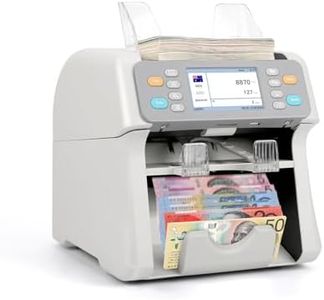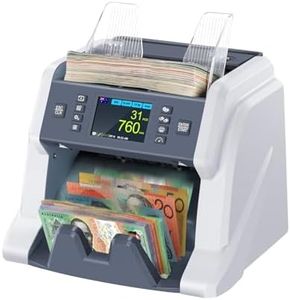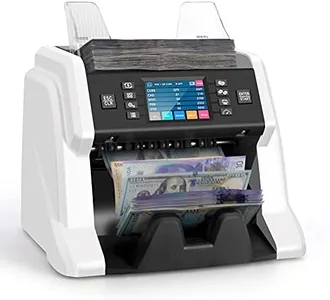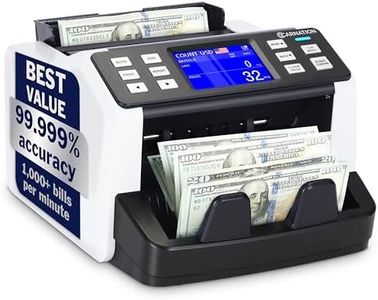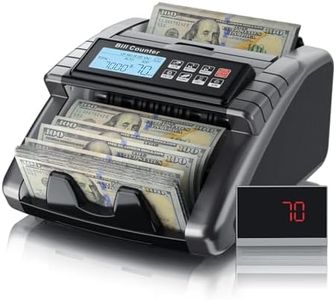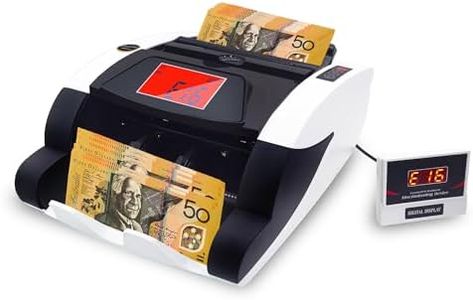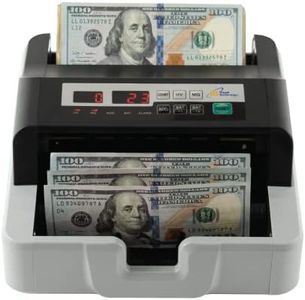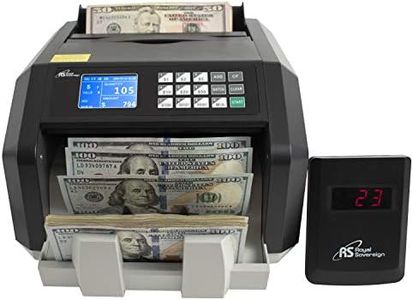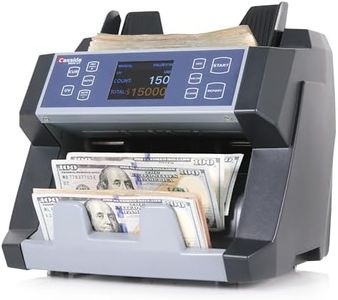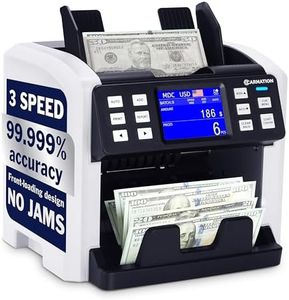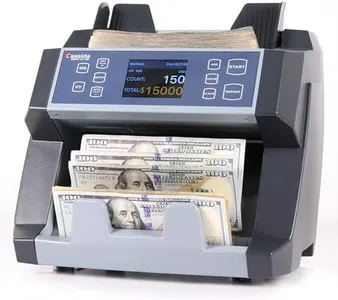We Use CookiesWe use cookies to enhance the security, performance,
functionality and for analytical and promotional activities. By continuing to browse this site you
are agreeing to our privacy policy
10 Best Bill Counter Machines
From leading brands and best sellers available on the web.By clicking on a link to a third party's website, log data is shared with that third party.
Buying Guide for the Best Bill Counter Machines
When selecting a bill counter machine, your main goal is to choose a machine that fits the volume and specific needs of your business or personal use. Bill counters can save significant time and reduce errors, especially for people who handle cash frequently. Before shopping, consider where and how often you'll be using the machine, what types of bills you need to count, and whether you need any special features like counterfeit detection. Understanding the main features and options available will help you pick a model that works reliably and efficiently in your everyday setting.Counting SpeedCounting speed tells you how many bills the machine can process per minute. Faster machines can save a lot of time, especially if you process large quantities of cash daily. Counting speeds often range from around 600 to over 1,500 bills per minute. Lower-speed machines are sufficient for small businesses or occasional use, while higher speeds are best suited for busy environments like banks or retail chains. If speed is important to you, estimate your daily cash handling volume and choose a speed that won’t slow you down or cause jams.
Bill Hopper CapacityHopper capacity indicates how many bills you can load into the machine at once. A larger hopper lets you count bigger stacks of bills without having to reload, which is very helpful for high-volume tasks. Typical capacities range from 100 to over 300 bills. For light to moderate daily use, a smaller hopper is fine, but businesses that deal with many bills at a time will appreciate a larger capacity to minimize interruptions.
Counterfeit DetectionCounterfeit detection is an extra feature in many bill counters that helps spot fake bills, increasing your security. Methods include ultraviolet (UV), magnetic (MG), and infrared (IR) detection. UV checks the marks in bills that glow under UV light, MG senses magnetic ink, and IR looks for special patterns. Some machines use one, while higher-end models combine multiple types. If you handle a lot of cash or are in an area where counterfeits are a concern, choose a machine with advanced detection methods to reduce your risks.
Bill Size CompatibilityBill size compatibility refers to the range of bill dimensions the machine can accept. Some machines work only with standard-sized bills, while others accept various sizes, including foreign currency. If you plan to count bills of different sizes or different currencies, check the specifications to ensure the machine will handle them all without jams or errors.
Batching and Add FunctionsBatching lets you pre-set a number of bills to be counted for each stack, which is helpful if you frequently need to organize cash into specific amounts. The add function allows the machine to keep a running total when you feed in multiple batches. These features are useful for people who often need to prepare cash deposits or organize bills for accounting purposes. Consider these if you want to simplify workflow and reduce manual counting.
Display Type and Ease of UseDisplay type refers to how the machine shows you information, like the count result or error messages. LCD and LED displays are common and should be clear and easy to read. Machines with simple controls, intuitive settings, and visible displays are much easier to use, especially for beginners. Think about who will be operating the machine and choose a model with a display and controls that match your comfort level.
